A Week in Place: the 2023 Teacher Institute
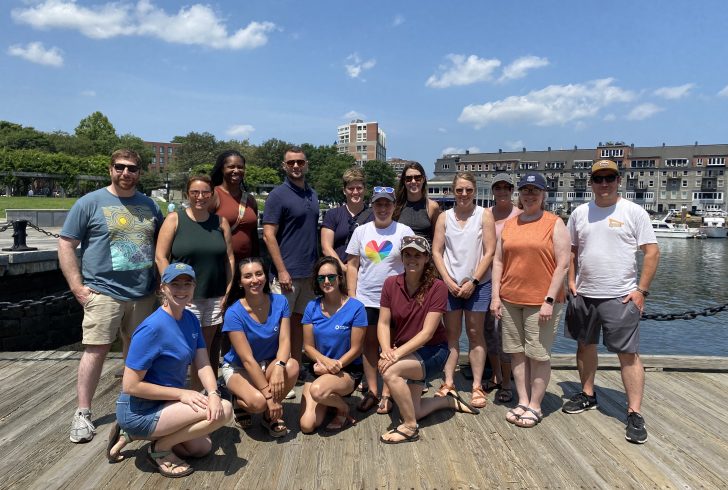

By Daria Healey
Summer Institute Fellow
Last month, we were pleased to host our second Stone Living Lab Teacher (SLL) Institute – a free five-day course bringing teachers, educators, and researchers together to engage in hands-on activities and discussions about climate change, place-based learning, and participatory science* in the local context of Boston Harbor. This year’s cohort welcomed 11 teachers from across the Greater Boston area, educating students from Grade 6-12 in a variety of scientific disciplines. The program was co-facilitated and developed by Elisabeth Colby and Cathy Radonic (National Park Service), Holly Rosa (Boston Public Schools), and Rebecca Shoer (SLL).
Over the course of the week, as we learned and explored Boston Harbor, the teachers began work on the capstone project of the course: developing a place-based lesson plan that can be implemented in their own classrooms for the upcoming academic year. Each lesson plan had to explore at least one participatory science protocol and incorporate at least one topic related to climate change.
After piloting our first Teacher Institute last summer, we were thrilled to welcome a new (and growing!) cohort of participants for the program’s second year. Follow along below to see what we did each day!
For our first day of the Institute, we gathered at the Commandant’s House in the Charlestown Navy Yard. Built in the early 19th century, the main floor of this historic residence is now used as a meeting space. With its classical-style architecture, chandeliers, and decorative furniture, guests feel like they are taking a step back in time – while also enjoying the modern benefits of air conditioning, screen projectors, and fresh coffee.
We started the morning with an introduction to the syllabus and the six pillars of place-based learning. The six pillars set a standard for learning objectives that are: rigorous, real, empowering, collaborative, integrated, and grounded in place. We referred back to these pillars throughout the course of the week.
In the afternoon, settled on the lawn outside the Commandant’s House, we held our first Protocol Carousel. The Carousel was developed using feedback from last year’s cohort as an opportunity for teachers to engage directly with educators and researchers from the Boston area who are incorporating participatory science protocols in their own work.
Guests at the event included members of Boston University, the Mystic River Watershed Association, the Museum of Science, the Massachusetts Audubon Society, the Harvard Forest, the National Park Service, and the Nature Conservancy. Covering a variety of protocols, from iNaturalist to water quality testing, the teachers perused tables provided by our guest speakers at their own pace and considered possible applications within their lesson plans. At the end of the day, we led a reflection to discuss the teachers’ initial impressions of the protocols and additional insights from our guest speakers.
On Tuesday, we started the morning with presentations from three guest speakers, focusing on climate change curriculum. We were thrilled to welcome back two teacher alumni from our 2021 Teacher Institute, to share about how they integrated their final projects into the school year.
Nadia Johnson, from Braintree Public Schools, presented her year-long water quality monitoring program for 10th and 11th Grade students focused on a lake near her school. Deborah Baird, from Quincy Public Schools, discussed a 7th Grade lesson plan for projecting future sea level rise.
The final presentation of the morning came from Brittany Hoffnagle, a Climate Resiliency Specialist with the Woods Hole Group. Brittany collaborated with Sandwich Public Schools to develop a Climate Change and Coastal Resiliency Curriculum Framework for their 7th and 8th Grade students. After explaining the place-based lesson plan, Brittany also led a demonstration with the teachers to walk through the interactive program software used for the lesson activity.
In the afternoon, we traveled to Coughlin Park in Winthrop. With scenic views of Boston Harbor in the background, we explored the park’s publicly accessible coastline and discussed the site’s history of erosion. We also described the role of the Woods Hole Group and Stone Living Lab in enhancing Coughlin Park’s coastal resiliency, primarily through the restoration of salt marsh grasses and cobble berms.
The teachers then had some time to experiment with intertidal biodiversity monitoring before meeting with Dr. Jahson Alemu I, a postdoctoral scholar with The Nature Conservancy and Northeastern University, to discuss Jahson’s own journey in coastal sustainability research.
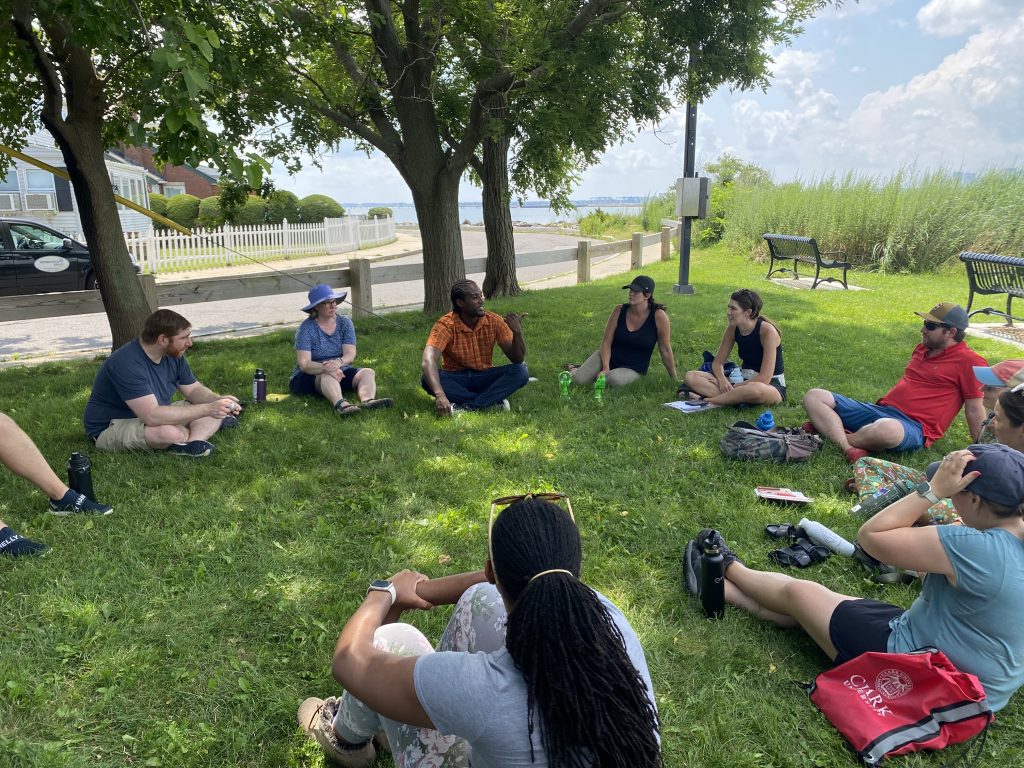
Dr. Alemu shared his personal journey into marine and climate sciences.
We wrapped up the day just as dark clouds rolled in over the Harbor, narrowly beating out some strong summer rains.
Approaching the middle of the week, we started our Wednesday morning with a quick participatory science protocol refresher before diving into our first in-class capstone project planning session. The teachers were split into pairs to discuss their ideas and gather feedback before developing draft presentation posters about their lesson plan.
In the afternoon, we headed to the Condor Street Urban Wild in East Boston, where we met Nick Long, an Urban Wilds Foreman for the City of Boston, and Jessica McNiff, a 5th Grade teacher at Samuel Adams Elementary School. Nick told us about the restored urban wild’s history as a former dumping ground, and Jessica provided insights into how we can bring students into urban wilds and teach about nature.
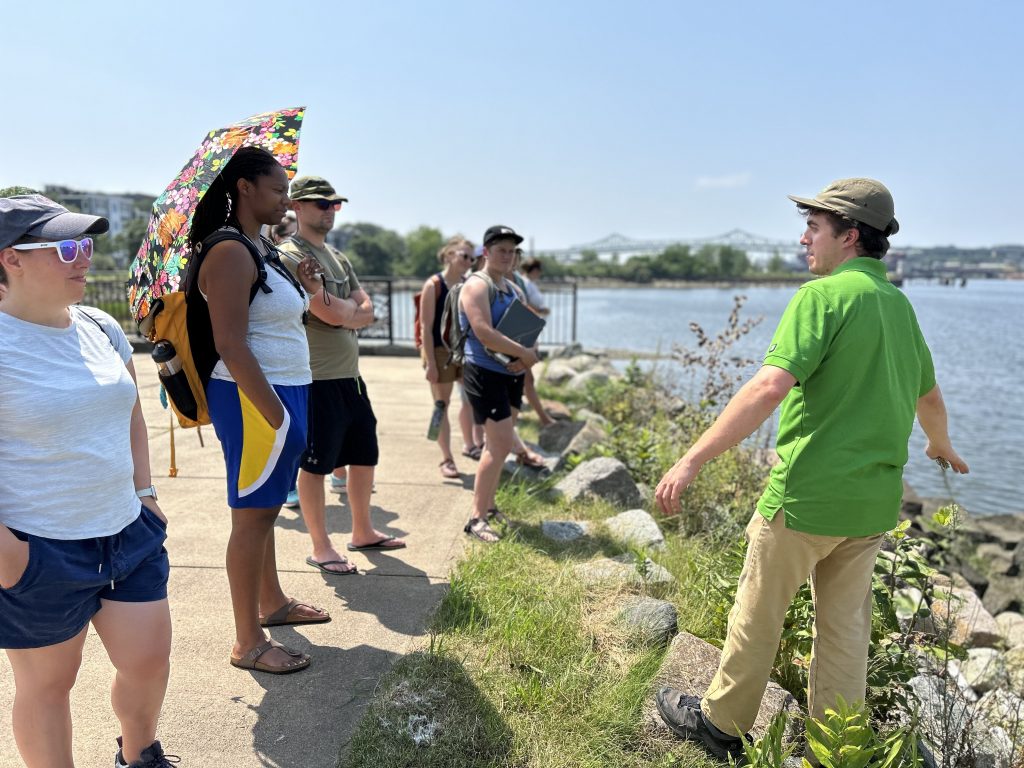
Nick Long, City of Boston, sharing about the coastal plants found at Condor Street Urban Wild.
The teachers also had opportunities to explore the biodiversity of the area. We introduced the iNaturalist app to identify and log species in the app’s public database, and we used
Jessica’s ABCD guide for scientific drawings (A – Accurate, B – Big, C – Colorful, D – Detailed) to draw an interesting organism or landscape we found along the way.
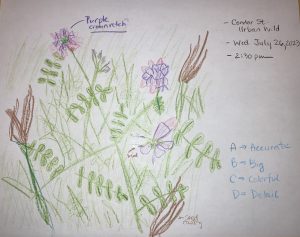
With Thursday’s afternoon forecast calling for rain, we adjusted our schedule and started the morning with our field visit to Carson Beach in South Boston. We were joined by members of the National Parks of Boston’s Youth Conservation Corps (YCC), who worked with the teachers in small groups to practice beach profiling and bivalve identification through Bivalve Quest.
At the end of the site visit, the YCCs also shared their own insights into what they felt contributed to an exciting and engaging climate-based field trip.
When we returned to the Commandant’s House for the afternoon, the teachers finished their capstone posters before presenting their lesson plans to their peers in a Gallery Walk. After presenting, the teachers also had an opportunity to peruse the posters on their own and provide feedback.
Continuing a theme of adjusting to inclement weather, a particularly high heat index for the last day of the Institute led us to change our plan for an all-day Spectacle Island outing and instead take a scenic tour of Boston Harbor aboard our local MBTA commuter ferry.
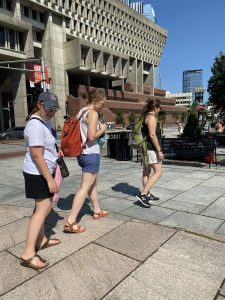
We met in the morning at Faneuil Hall, in Downtown Boston, where we started by introducing the teachers to a permanent public art installation located right next to the Hall: “A Once and Future Shoreline.” This installation, etched into the stone around the Samuel Adams statue, marks the location of Boston’s pre-colonial shoreline and early street plans, as a reminder of how our shoreline may once again resemble this historic layout as sea levels rise.
We were also able to take a brief tour of the Boston Slavery Exhibit within Faneuil Hall, before making our way to Long Wharf to catch the ferry. Riding with our fellow Boston-area commuters, the boat made stops at Logan Airport, Hull, Hingham, Georges Island, and Logan (again!) before looping back to Long Wharf. Along the way, Elisabeth and Cathy discussed the history and ecology of the islands.
To close out our last afternoon together, we gathered in the Leventhal Room at the Boston Harbor Hotel for a final chance to discuss posters before initiating a special ceremony: swearing in all eleven teachers as Park Service Junior Rangers!
The teachers are now hard at work developing their capstone lesson plans, which will be presented to partners and collaborators at the end of September. We cannot wait to see how they applied what they learned throughout the week!
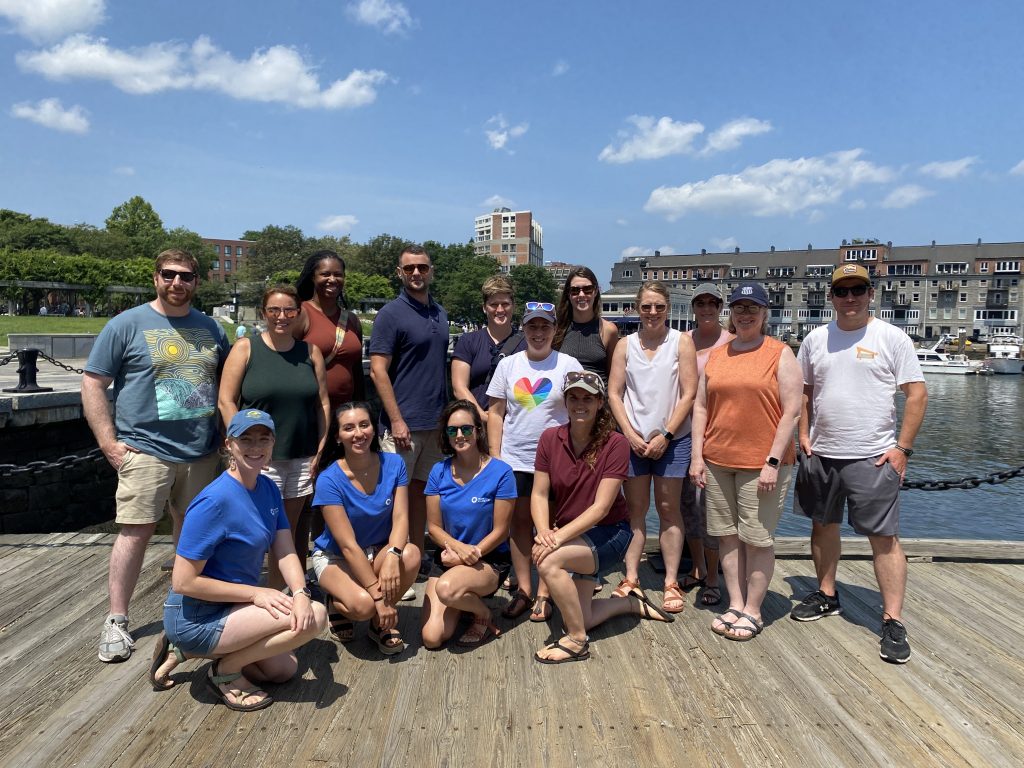
* Participatory science has historically been referred to as “citizen science”. However, members of the broader scientific community have been shifting away from the use of the term “citizen.”